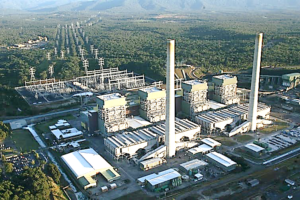NSW’s biggest coal mine to close in 2030
Now what about the workers? – Liam Phelan and Kimberly Crofts
End of the line for 2,000 workers
The Mount Arthur mine is the one of the biggest coal mines in the world by estimated reserves. Mining began in 2002, extending on existing mining in the area dating back to the late 1960s. Up to 20 million tonnes of thermal coal a year have been extracted. About 2,000 workers are employed at the site.
It’s worth noting BHP only has permits from the NSW government to operate the mine until 2026. So it will need to seek a short extension to keep to its schedule. The NSW government can be expected grant that extension.
The NSW government will probably be glad for the extra time to plan on the transition. It has already been caught off-guard once this year, by Origin Energy’s February announcement of the early closure of its Eraring coal-fired power station in Lake Macquarie, also in the NSW Hunter region.

Federal government planning on just transitions for coal communities, meanwhile, has been stymied by the Coalition’s focus over the past decade on prolonging coal mining as long as possible.
What the federal Labor government will do is yet to be seen, though new federal member for the electorate of Hunter, Dan Repacholi, has said his key concern is the welfare of workers.
Three community priorities
Communities in NSW’s Hunter Valley are more than aware that time is running out for coal mining. Last year community workshops were held around the region to discuss what is needed for a just transition to occur. Three priorities emerged from those discussions:
- a local authority to coordinate transition efforts
- funding for a “flagship” job-creation project
- more resources for technical and vocational education.
The first priority has been somewhat met by the NSW government creating a Royalties For Rejuvenation Fund and Expert Panel, which has $25 million a year to spend on mining communities.
But compare that to the $660 million the Western Australian government has allocated to fund the coal transition of a single town, Collie.
Lessons from the past
Research shows the best transitions are those that are equitable, just, and well-planned.
The good thing is that the Hunter Valley has experience with transition, from when BHP shuttered its Newcastle steelworks in 1999. While not a perfect case study, it does provide lessons for today.
Particularly important is a collaborative approach between unions and management. This ensured workers had support for redundancy, retraining, financial planning and finding new employment. A Hunter Valley alliance between unions and environmental groups is pushing for the same level of collaborative planning.
Without a co-operative and inclusive approach, drawing on local knowledge, no transition plan is likely to succeed.
Source: The Conversation, 17 June 2022
https://theconversation.com/nsws-biggest-coal-mine-to-close-in-2030-now-what-about-the-workers-185292
 Liam Phelan is Senior Lecturer, School of Environmental and Life Sciences, University of Newcastle
Liam Phelan is Senior Lecturer, School of Environmental and Life Sciences, University of Newcastle
Kimberley Crofts is a doctoral student, University of Technology Sydney





























